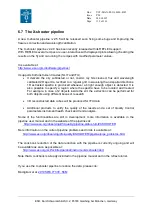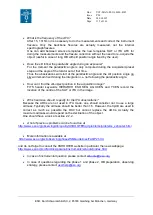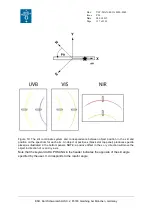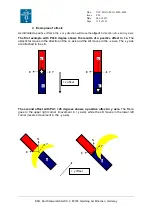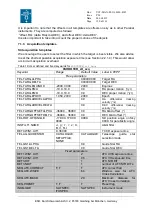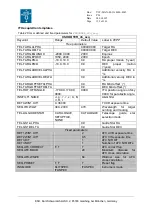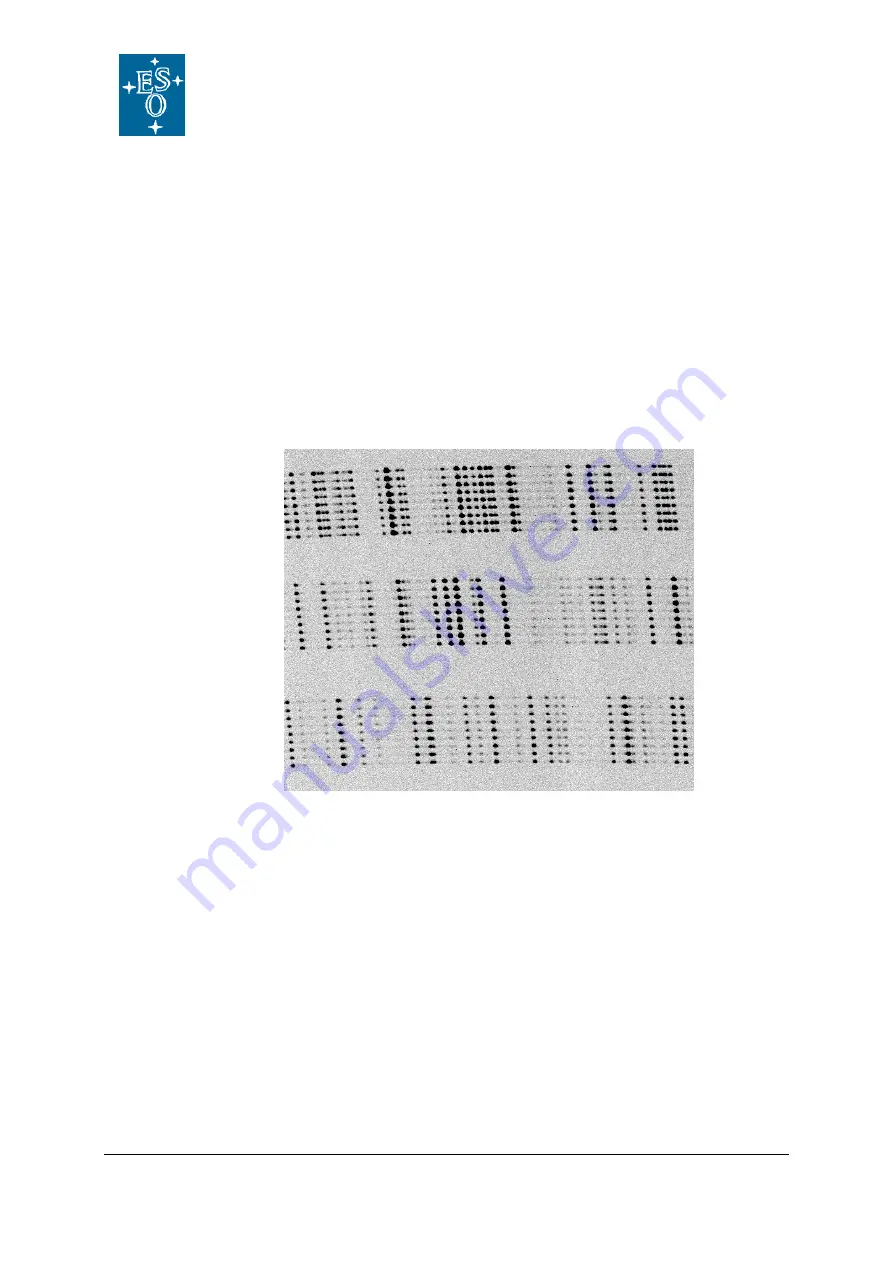
Doc:
Issue
Date
Page
VLT-MAN-ESO-14650-4942
P96
24.06.2015
107 of 161
ESO, Karl-Schwarzschild-Str. 2, 85748 Garching bei München, Germany
6.2 Wavelength and spatial scale calibration
As described in section 2.3.1, the spectral format of X-shooter is relatively complex with
highly curved orders, variable line tilt, dispersion and spatial scale along each order. Using
just long slit arc spectra is not sufficient because it is essential to also calibrate the change of
spatial scale (just measuring the slit height is not accurate enough).
Wavelength and spatial scale are well calibrated simultaneously with a dedicated mask of 9
equidistant pinholes present in each slit unit (see Table 4, Table 7 and Table 8) in
combination with the ThAr lamp. Exposure time for each arm is given in Table 17. An
example of such a frame is given in Figure 18. The templates used for this calibration is
XSHOOTER_slt_cal_UvbVisArcsMultiplePinhole
and
XSHOOTER_slt_cal_NIRArcsMultiplePinhole
The accuracy of the wavelength calibration typically achieved using the X-shooter Data
Reduction Software is better than ~2km/s over the whole wavelength range, see section
2.4.9. In this process, the quality of the list of lines used to perform the calibration is critical
(in particular, it has to be carefully cleaned from blends). Such a ThAr line list is provided
together with the X-shooter Data Reduction Software package.
Full slit ThAr spectra are also useful to correct the slight (fixed) displacement between the 9-
pinhole masks and each slit. This is also used to monitor the spectral resolution of the
different
spectrographs.
Templates
to
use
for
these
calibrations
are
XSHOOTER_slt_cal_UVBVisArcs, XSHOOTER_slt_cal_NIRArcs,
XSHOOTER_ifu_cal_UVBVisArcs, XSHOOTER_ifu_cal_UVBVisArcs
.
Figure 18: portion of a 9-pinhole ThAr VIS frame used for
wavelength and spatial scale calibration.





















